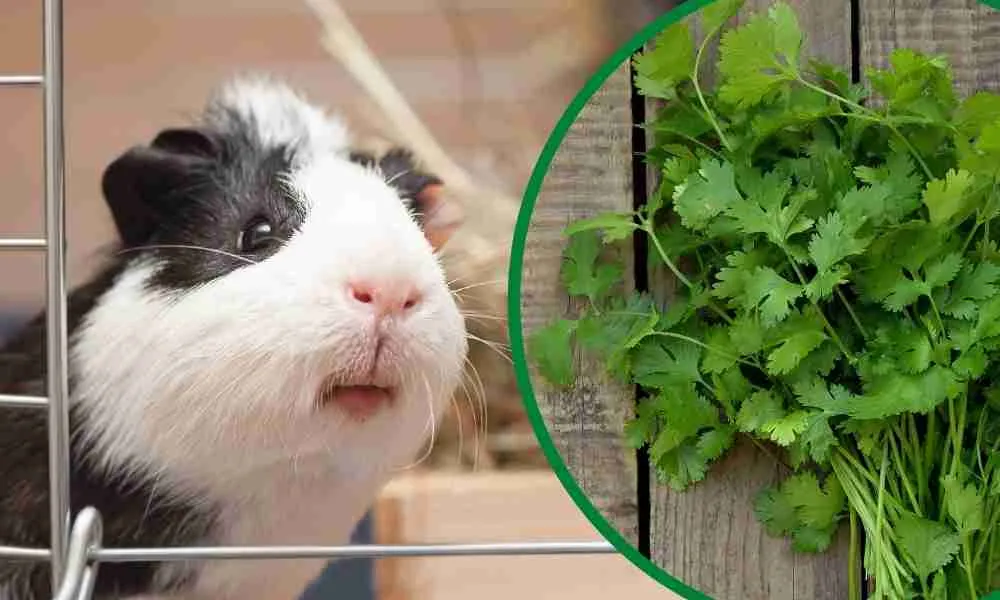Cilantro is a refreshing green vegetable with a strong smell. In fact, it is rich in vitamins and minerals that make it a healthy diet option too.
Since cilantro is highly nutritious, you must be wondering, can guinea pigs eat cilantro?
The answer is yes! Guinea pigs can eat cilantro as it has many health benefits for them and it is rich in Vitamin A and Zinc. However, like other green veggies, cilantro should be served in moderation to your guinea pigs.
Feeding them cilantro daily can have adverse effects on their health.
Ideally, you should serve 10-15 small leaves of cilantro to your guinea pigs once or twice a week for good results.
If you plan to make a salad and mix other veggies, try putting 5-6 small cilantro leaves.
However, just knowing that guinea pigs can eat cilantro isn’t enough. You should also understand what all parts of cilantro can guinea pigs eat. To find answers to this question, we would suggest you read our blog thoroughly.
Table of Contents
Can Guinea Pigs Eat All Parts of Cilantro?
No, guinea pigs cannot eat all parts of cilantro. There are certain parts that guinea pigs can consume and certain that they cannot eat like cilantro roots.
Nonetheless, guinea pigs can eat some other parts of cilantro. Let’s have a look at what all parts of cilantro are edible for a guinea pig.
Can Guinea Pigs Eat Cilantro Leaves?
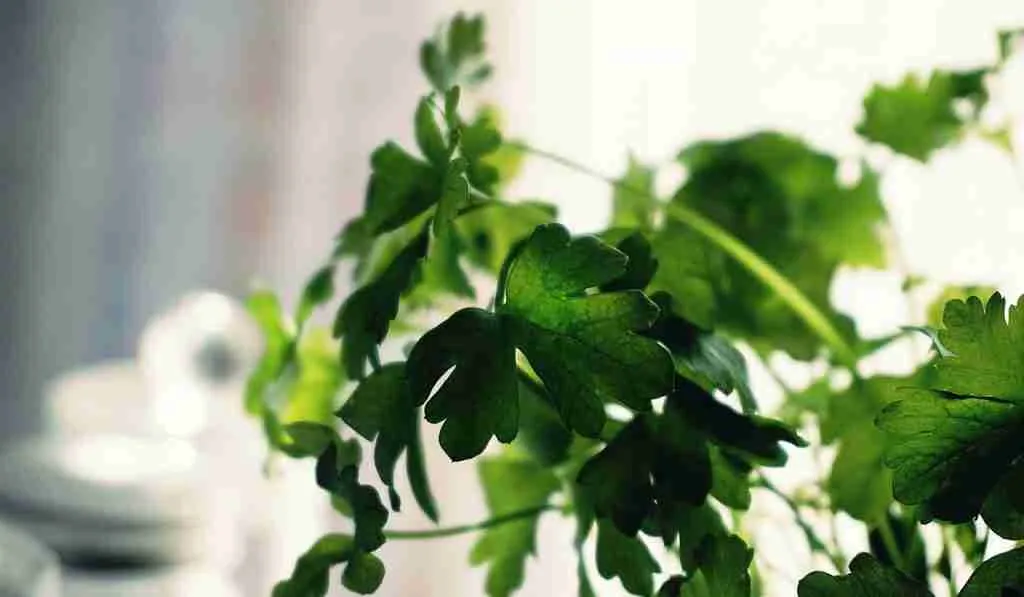
Yes, guinea pigs can eat cilantro leaves. Cilantro leaves are very tasty and guinea pigs love chewing them. They are packed with Vitamin A, C, and K and minerals like phosphorus which are good for your cavy’s health.
Can Guinea Pigs Eat Cilantro Flowers?
Yes, you can feed cilantro flowers to your guinea pigs. It’s extremely safe to let your cavies eat cilantro flowers as they don’t have any side effects on them. Moreover, pretty cilantro flowers look appealing and taste good to guinea pigs.
Can Guinea Pigs Eat Cilantro Stems?
Yes, you can feed cilantro stems to your guinea pigs. Unlike kale and spinach, cilantro stems are relatively soft. Guinea pigs can easily chew and digest cilantro stems.
Can Guinea Pigs Have Cilantro Every Day?
No, guinea pigs cannot have cilantro every day. Feeding cilantro to your guinea pigs daily can lead to many health risks in guinea pigs. Therefore, it’s always better to serve cilantro occasionally to your cavies.
How Much Cilantro Should I Feed My Guinea Pigs?
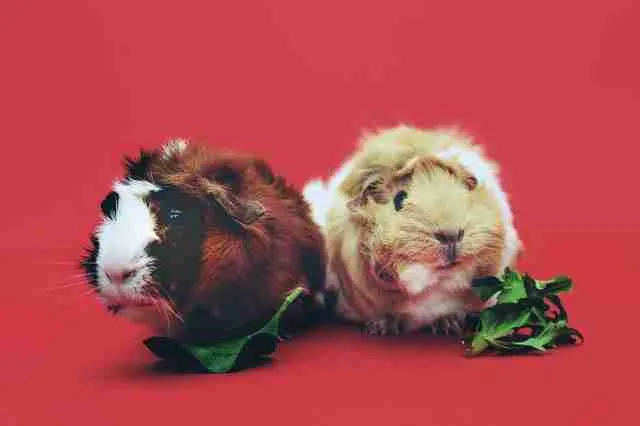
Ideally, you should serve 10-15 small strings of cilantro to your guinea pigs. If you are planning to mix them with other veggies, make sure you reduce the number of strings to keep the amount of the whole meal appropriate for your pigs.
How Often Can Guinea Pigs Have Cilantro?
Guinea pigs can have cilantro once or twice a week to draw benefits from it. Feeding them cilantro more than twice a week can be risky for their health.
Now that you know how often you should feed cilantro to guinea pigs, you should be curious to know the nutritional value of cilantro to get a better idea of what nutrients are present in high amounts and what nutrients are contained in small quantities in cilantro. Let’s find out!
Nutritional Value of Cilantro
Are you curious to know the nutritional value of cilantro before you consider introducing it to your pet’s diet? If that’s the case, below is the nutritional value chat per 100 gms of cilantro. Take a look at it to get an idea of what all nutrients are present in cilantro and in what amount.
| Nutrients | Per 100 gms |
| Vitamin A | 0.337 mg |
| Vitamin K | 0.310 mg |
| Vitamin C | 27 mg |
| Energy | 23 kcal |
| Fat | 0.52 g |
| Fiber | 2.8 g |
| Carotene | 3.93 mg |
| Phosphorous | 48 mg |
| Magnesium | 26 mg |
| Potassium | 521 mg |
| Sugar | 0.87 g |
| Water | 92.21 g |
| Lutein and Zeaxanthin | 0.865 mg |
| Calcium | 67 mg |
| Carbs | 3.67 g |
Health Benefits of Cilantro for Guinea Pigs
There are many health benefits of cilantro for guinea pigs. However, cilantro is only beneficial for your guinea pigs if it is served in the right quantity.
Below are some of the major pros of cilantro for guinea pigs:
Smooth Digestion
Since cilantro is rich in dietary fiber and water content, it helps in the smooth digestion of food in guinea pigs. Due to an inactive lifestyle, guinea pigs can often face constipation. Therefore, it’s important to feed them fiber-rich vegetables for an easy bowel movement and maintaining a good metabolic rate.
Improves Eyesight
Good amounts of Vitamin A and Beta Carotene in cilantro helps to keep the eyes of guinea pigs healthy. Vitamin A is essential to keep the eye surface (cornea) moist and healthy, while beta carotene is good for night and peripheral vision of your cavies.
Prevents Scurvy
Scurvy is a common disease in guinea pigs. The reason behind it is that guinea pigs are incapable of producing their own Vitamin C. Therefore, they develop scurvy due to the deficiency of Vitamin C.
The Common symptoms of scurvy are gum diseases, pain in limbs, anemia, and weakness. Nonetheless, giving your cavies a Vitamin C-rich diet can prevent them from getting scurvy and the symptoms related to it.
Helps in Controlling Weight
Cilantro helps in keeping the weight of guinea pigs in check. The inactive lifestyle of guinea pigs can result in weight gain and fatigue in guinea pigs. However, feeding them cilantro and other veggies which are low in calories and fats can keep their weight in control.
Boosts Immune System
A strong immune system helps in fighting germs better. On the other hand, the chances of catching germs and other diseases are high in creatures with poor immune systems. Vitamin C, Vitamin K, and antioxidants present in cilantro help to make the immune system of guinea pigs strong.
Good for Bones and Teeth
The rich calcium content of cilantro helps in building strong bones and teeth in guinea pigs. Lack of calcium in the bodies of guinea pigs can result in weak bones and teeth. Therefore, feeding them calcium-rich food is better for their overall growth and development.
Maintaining Cholesterol and Blood Sugar Levels
Low fat and calories in cilantro help in maintaining cholesterol and blood sugar levels in guinea pigs. High calories and fat-rich food can cause a rise in blood sugar and cholesterol levels, which can further lead to the risk of developing heart diseases, weight gain, low metabolism, and other health risks.
Reduce Inflammation to Your Guinea Pigs
Inflammation is common in guinea pigs. It can lead to pain in joints and muscles and low energy levels in guinea pigs. Nonetheless, a diet rich in antioxidants helps in reducing inflammation in guinea pigs. Feeding an appropriate amount of cilantro to guinea pigs can prevent inflammation as cilantro is rich in antioxidants.
Preventing Dehydration
Dehydration is the loss of water from the body. It can lead to weakness and lack of energy in guinea pigs. However, feeding them vegetables that have a high water content can prevent dehydration. You would be surprised to know that 100 gms of cilantro contains 92 gms of water, and therefore, it is an excellent diet option to keep your cavies hydrated and fit.
Health Risks of Cilantro for Guinea Pigs
If serving more than the required quantity, cilantro can be bad for your pets. Let’s see what are the major health risks of feeding excess cilantro to your cavies.
Skin Allergies
If served in excess, cilantro can cause skin allergies in guinea pigs. It’s therefore important to introduce any new food to your cavy’s diet with full precautions. Make sure you first observe how your piggies react to this new diet carefully for a day or two to see if cilantro is right for them or not.
Try avoiding it if your pet reacts negatively to it or develops any skin rashes or allergies.
Bladder Stones
The rich calcium content of cilantro can lead to the formation of bladder stones in guinea pigs. Therefore, it’s important to mix cilantro with low-calcium veggies like lettuce or tomatoes to balance out the calcium. If not taken care of, bladder stones could be really painful for your cute little pets.
Bloating
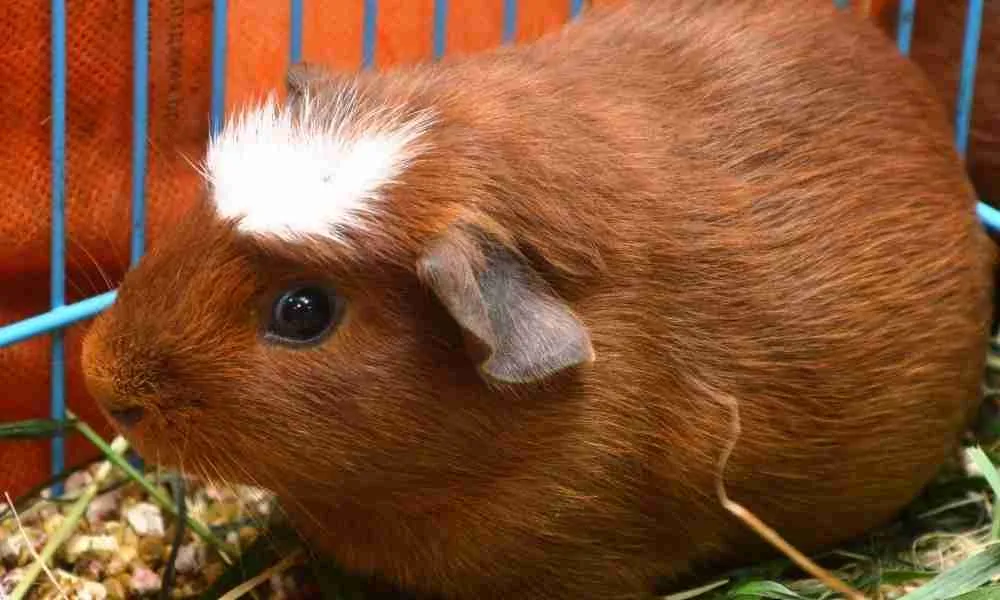
The rich fiber and water content of cilantro can cause bloating in guinea pigs if served more than the recommended amount. Therefore, be cautious of the right serving whenever you plan to supplement your piggy’s diet with cilantro.
Indigestion or Diarrhea
Although the rich fiber content of cilantro improves digestion and prevents constipation, it can lead to diarrhea and indigestion if served in excess. Diarrhea causes watery stool and stomach pain in guinea pigs.
Take Note: You should not feed cilantro to pregnant guinea pigs as it is risky for them. Excess cilantro can hamper the normal functioning of the reproductive glands of female guinea pigs.
How To Prepare Cilantro For Guinea Pigs?
Are you clueless about preparing cilantro for guinea pigs? Take a note of the following steps to serve fresh and healthy cilantro to your guinea pigs.
Step 1: Shop Healthy
The first step to prepare cilantro is to gather fresh cilantro from a vegetable or grocery store. If you have an organic store nearby, it’s better to buy fresh cilantro from that store. Avoid buying cilantro with yellow leaves or holes as these are the signs of damaged cilantro.
Always buy green cilantro free from any holes. The holes indicate that the cilantro has been infected by insects and other pesticides.
Step 2: Remove Cilantro Roots
The next step is to remove cilantro roots as they are unpleasant and unhealthy for guinea pigs. Cilantro roots are brown in color as they have soil and mud on them. Therefore, you should remove them.
Step 3: Wash Thoroughly
Once you remove cilantro roots, it’s time to wash them thoroughly with fresh water. Washing cilantro is important to remove the presence of impurities like dirt, pesticides and other chemicals that are used to grow and preserve them. If not washed properly, the chemicals present in cilantro can be toxic for your little pets.
Step 4: Drain Excess Water
After you are done washing cilantro, it’s time to drain excess water using a strainer as excess water can damage the cilantro and make it unfit to eat.
Step 5: Chop Cilantro into Small Pieces
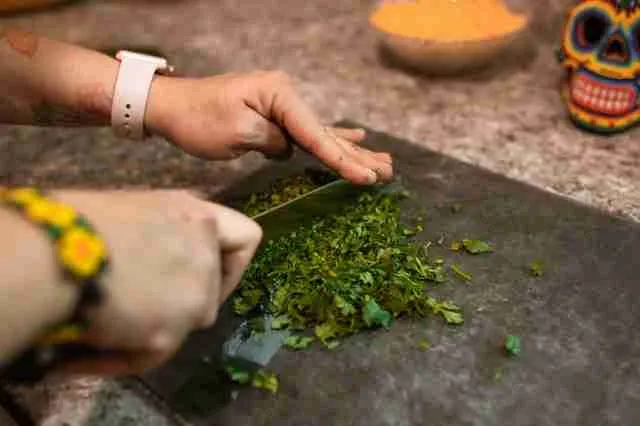
Now that you have drained the excess water, it’s time to chop cilantro into small bite-sized pieces so that guinea pigs can easily chew and digest them.
Step 6: Ready to Serve
Once you are done chopping, you are all set to serve fresh cilantro to your guinea pigs and see them enjoying their healthy meal.
Step 7: Wipe the Area
After your little pet finishes its dish, it’s time to clean the area with a wet wipe or cloth to prevent the breeding of germs and mosquitoes.
Cilantro Alternatives for Your Piggies
Are you looking for some alternative veggies to feed your cavies? Have a look at the table below to see some other vegetables you can serve to your guinea pigs.
| Cucumber | Broccoli | Carrots | Celery |
| Basil | Cauliflower | Spinach | Kale |
| Green Beans | Tomatoes | Dandelions | Green Turnips |
| Bell Peppers | Zucchini | Corn | Asparagus |
Final Thoughts
Today we have learned that it’s okay for guinea pigs to eat cilantro because it is a good source of Vitamin C, phosphorus, potassium, water, and fiber. It also contains other micronutrients like calcium and magnesium which are good for the health of guinea pigs. However, after reading this blog, you must have got an idea to not overdo cilantro in your piggy’s diet to avoid health risks like bladder stones and blood clotting.
If you are planning to treat your cavies with something new like cilantro, this blog will help you a great deal to know what measures you should take while introducing cilantro to the diet of your pets. Let your pets enjoy different varieties of veggies without any side effects. Good luck!
Love It? Save It On Your Pinterest “Guinea Pig Board”!

